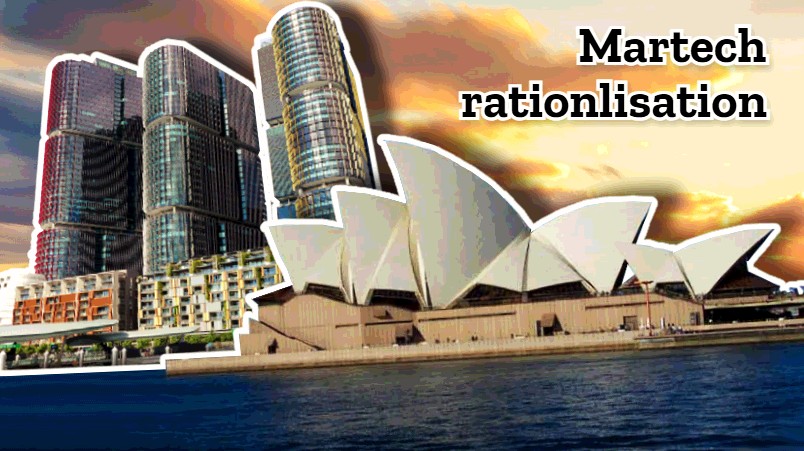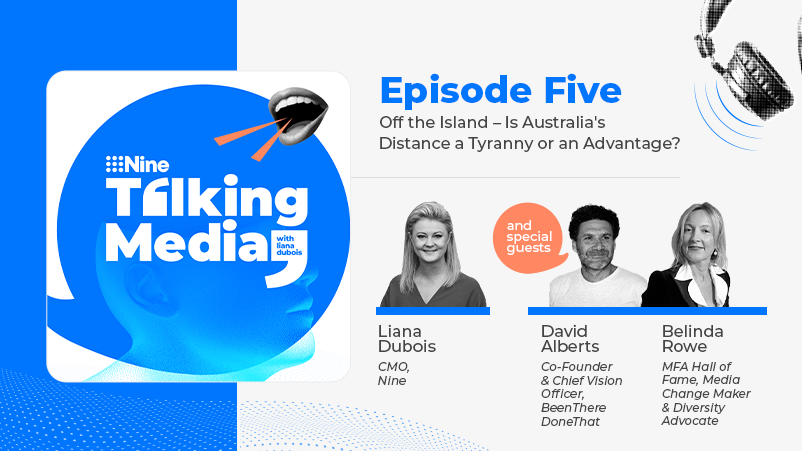Opera House, Lendlease latest to cut martech spend; Adobe, Salesforce, Sitecore displaced by challengers Canva, Hubspot, Optimizely, Acquia as big cost-driven consolidations begin

Martech shakeup: LendLease and Sydney Opera House latest in a broad corporate rationalisation of marketing and customer technology investments.
The Sydney Opera House and Lendlease have jettisoned their tier one martech platforms – Adobe, Salesforce and Sitecore – the latter two in the Lendlease stable – as they look to bank significant savings from martech rationalisation. Both projects are comprehensive in scope. Lendlease for instance is moving to Hubspot from Salesforce for core marketing cloud and customer relationship management (CRM) capabilities, to Optimizely from Sitecore for its digital experience platform which is designed to deliver personalised customer experiences and to Canva from Adobe for its content creation needs. And both deals are part of broader trend Forrester Research says could see corporates shed a third of their “tactical revenue stack solutions” this year.
What you need to know
- Big cost-driven martech consolidations have begun.
- Sydney Opera House is replacing Adobe with a combination of solutions, including Acquia and homegrown digital asset management platform Collaboro, with a new email platform combining Active Campaign and Prospect2 .
- Lendlease is replacing its Salesforce Marketing Cloud with a solution built around Hubspot. The property giant is also running a parallel project around a digital experience platform [DXP] that it says is already delivering significant YOY savings, among other benefits. DXP's are designed to help businesses create personalised digital experiences. It's a market dominated by companies like Optimizely and Sitecore, along with Adobe, Opentext, and Acquia (which was successful at Opera House)
- Forrester Research says that organisations will shed one-third of the point solutions from their revenue tech stack during 2023 - Point solutions are the smaller tactical software offerings that typically plug into a core marketing cloud
- Smaller organisations are also getting in on the trend, with Asthma Australia telling Mi3 recently it saved almost a quarter of a million dollars by rationalising six key data repositories used for online shopping and fund raising.
- But marketing cloud vendors also stand to gain from the trend. Hubspot, for instance, has been pushing a message for over a year that marketers want to coalesce around a core CRM hub for most of their needs, which is where companies like Hubspot, Adobe, Salesforce and Oracle excel.
Our migration to an alternative DXP in 2022 has delivered substantial cost savings while not compromising on platform features and functionality.
Two well-known Australian cultural and business brands — Sydney Opera House and Lendlease — are currently replacing their core marketing technology platforms and abandoning tier one solutions as the hunt for platform cost savings heats up.
Opera House has ditched its Adobe marketing stack for a more composable solution where they are plugging together smaller individual components that best fit their needs - which includes Acquia for the web site build, Prospect2/Active Campaign for email and Collaboro, a local digital asset management solution. Lendlease meanwhile has abandoned a huge Salesforce implementation, opting instead for Hubspot. It also changed its digital experience platform from Sitecore to Optimizely, and is also now primarily using Canva instead of Adobe content.
Opera House could not be reached for comment. However, a Lendlease spokesperson commenting specifically on the DXP decision, said, "An agile, fit for purpose and high value content management system is critical to delivering optimal web experiences for our customers. Our migration to an alternative DXP in 2022 has delivered substantial cost savings while not compromising on platform features and functionality."
An Adobe spokesperson told Mi3: "Sydney Opera House is an important Adobe customer across a range of solutions and we continue to partner with them closely". Opera House is still a Creative Cloud and Document Cloud customer.
In both Opera House and Lendlease the core issue was cost, not just of the licensing fees but also the implementation and integration costs. With Lendlease in particular, these were said to be considerable due to the complexity of the environment, which included both B2C and B2B requirements, according to project insiders.
As a result of the changes both organisations expect to bank significant savings, along with other benefits.
A gathering storm?
The issue of martech consolidation and rationalisation has percolated to the top of the marketing – and finance – agenda over the past year. According to technology analysts Gartner, most CFOs believe marketing technology has failed to meet enterprise expectations. Worse, even as martech stacks continue expanding, utilisation of the software that's already been implemented is actually falling, they say, adding that marketers are now under pressure to rein in their runaway investments.
Nor is Gartner alone in this view. As Mi3 reported earlier this year, 44 per cent of software as a service (SaaS) licences go unused according to analysis of the data held inside global software licence auditing programs offering a rich vein of costs for finance departments to target.
Forrester Research meanwhile says that organisations will shed one-third of the point solutions from their revenue tech stack during 2023.
It's not just about cost, say the analysts. For instance, a Forrester case study into the Nationwide Mutual Insurance Company in the US found that the business reduced its stack from 170 systems to 70 (and 96 at the time of the study) and identified a range of benefits including;
- Faster change orders and new feature releases
- Easier identification and action on capability gaps
- Improved content and data synergies
- An improve automation roadmap
- Stronger morale, and employee retention and a more innovative culture
Forrester Research's Daryl Wright, principal analyst of Demand and ABN strategies, told Mi3 the analyst firm has been saying for a year that consolidation in marketing tech point solutions, particularly in B2B, is an emerging trend (despite B2B marketers still willing to invest more in martech over all).
"We keep on seeing this. So particularly during COVID, a lot of people were piling in on digital technologies because they did not want to be left behind," Wright said. "A lot of tech has turned up and a lot of it are point solutions. They are really struggling to deliver value from that, because there aren't the skills internally, there's a lack of integration, and a lot of technology silos between all those things."
He also said there is a big convergence of marketing automation and Account Based Marketing platforms (which help target and engage specific high-value accounts). "Take an event management platforms, for instance. They will do things like email or website front ends and there's just too much overlap (between their existing software) It might be a point solution that is too hard to use and no one can get value out of it, or you have a number of larger solutions which are doing similar things. There's an opportunity for rationalisation," he said.
A lot of tech has turned up a lot of and it's point solutions. They are really struggling to deliver value from that, because there aren't the skills internally, there's a lack of integration, a lot of technology silos between all those things
Big bucks
Martech has soaked up an increasing share of total marketing spend in recent years, so the savings can be considerable even for smaller organisations. For instance Asthma Australia's director of Customer and Marketing, Kathy Packenas, told Mi3 earlier this year, "By rationalising six key data repositories for an online shop, for a health program, for our fundraising program and for our marketing program we anticipate savings over a three year period of about $220,000."
For larger organisations the potential savings are much larger.
Opera House was a marquee client for Adobe in Australia, having first done the deal in the middle of the last decade as part of a major digital transformation. Adobe held its Australian Symposium at the venue to highlight the relationship in 2016.
Initially, the maths made sense because of the very sponsorship deal Adobe struck with Opera House for their Symposium event; Mi3 has been told the some of those costs were offset against the project. However, as Adobe's business scaled in Australia, it outgrew the venue, and SOH was left holding the baby and having to cover all the costs with cold hard cash. It wasn't helped by additional overhead incurred from what insiders described as a "poor custom build".
The decision to make the shift from Adobe was made several years ago, but delayed by Covid. Mi3 understands a strategic review was conducted in the first half of 2021, with the tender out later that year.
According to the NSW Government eTendering web site, the scope of the work included:
- A Software-as-a-Service (SaaS) marketing automation or email service provider platform that is tightly integrated with Tessitura, and that will give SOH an in-depth understanding of its audience and the efficiency of its marketing.
- Implementation of the marketing automation or email service provider platform, including integrations with Tessitura, the selected CMS and other related Opera House data platforms and systems.
- A SaaS website CMS which will enable Opera House to cost-effectively internally resource and implement continuous development, including the flexibility of site components and the customer experience.
- Implementation of the website CMS, including re-platforming the existing code base if required.
- A Digital Asset Management system that allows for the efficient management, storage and usage of digital assets (images, copy, marketing video) between SOH teams and across platforms (email, website, social, signage, etc.).
The website rebuild was done with Acquia, which pitches itself at the leading Drupal digital experience platform provider for government across Australia,with the implementation done by Sitback, a human centred design agency. This occurred in 2022. More recently, according to the NSW eTendering web site, Zuni, a communications strategy consultancy picked up a tender for $460k for CRM and email software implementation, which includes Prospect2 and Active Campaign. Zuni, which is the local partner for Lynch2 – the company behind Prospect2 – was also involved in the initial strategic review, according to people involved in the project.
In addition to the Acquia implementation, Opera House has selected local digital asset management (DAM) Collaboro, which has also wracked up impressive wins at McDonalds, Hungry Jacks, Optus and M&C Saatchi. The email solution being implemented by Zuni has tight integrations into Tessatura, Opera House online ticketing platform, hence, in part, the choice.
Building smarter
Like Opera House, the Lendlease decision is cost driven with the choice of Hubspot taken last year after the building giant realised there were significant savings to be had from moving off Salesforce. The business is believed to have spent more than $15m on the implementation (not all of that going to Salesforce, which is said to have netted a couple of million in licence and service fees, according to insiders.)
But Lendlease would have been on the hook for "several million more" in project costs had they not opted for a new martech solution, Mi3 was told. A project insider noted that the complexity of the implementation — which was managed by Salesforce Professional Services rather than an external third party — wasn't helped by the fact that Lendlease "..lost a whole heap of people who had signed off on business case and were going to work on the use cases."
Price and speed of implementation were said to be important drivers behind the choice of Hubspot, a platform Lendlease is believed to already work with in some other parts of its global operation.
Coincident to the CRM decision, Lendlease also signed a deal with Optimizely last year to provide a new digital experience platform after a review of the market, which had become more competitive since the original decision. More than 55 sites have been migrated in the first year with those close to the project describing the YOY savings as substantial, with no loss in functionality. The move is also said to have reduced the company's physical data centre dependencies as they opted for software as a service and platform as a service models. There is also believed to be tighter integrations with Lendlease's Aprimo digital asset management solution.
While both Adobe and Salesforce where on the wrong side of the decisions in this instance, there is also an argument to be made that the bigger martech cloud providers could also benefit from the "dumpstack" trend.
Indeed Hubspot, which ultimately succeeded at Lendlease, has been arguing for more than a year that marketers will want to consolidate around a solid CRM core. Speaking on a Digital Nation minicast last year, the company's VP Platform Ecosystem Scott Brinker said, "What we now have seen certainly with HubSpot, but across the CRM space, in general, is the sophistication of the underlying CRM platform has raised to a level that is able to serve 80 per cent of the use cases for most of the companies consistently across those different functional areas."
According to Brinker, "The marketing technology landscape, over the past decade there's this incredible explosion of all these different marketing and sales technologies. While we had a lot of capabilities in each, the integration challenge across them was something that a lot of marketing sales, customer success organisations struggled with."



